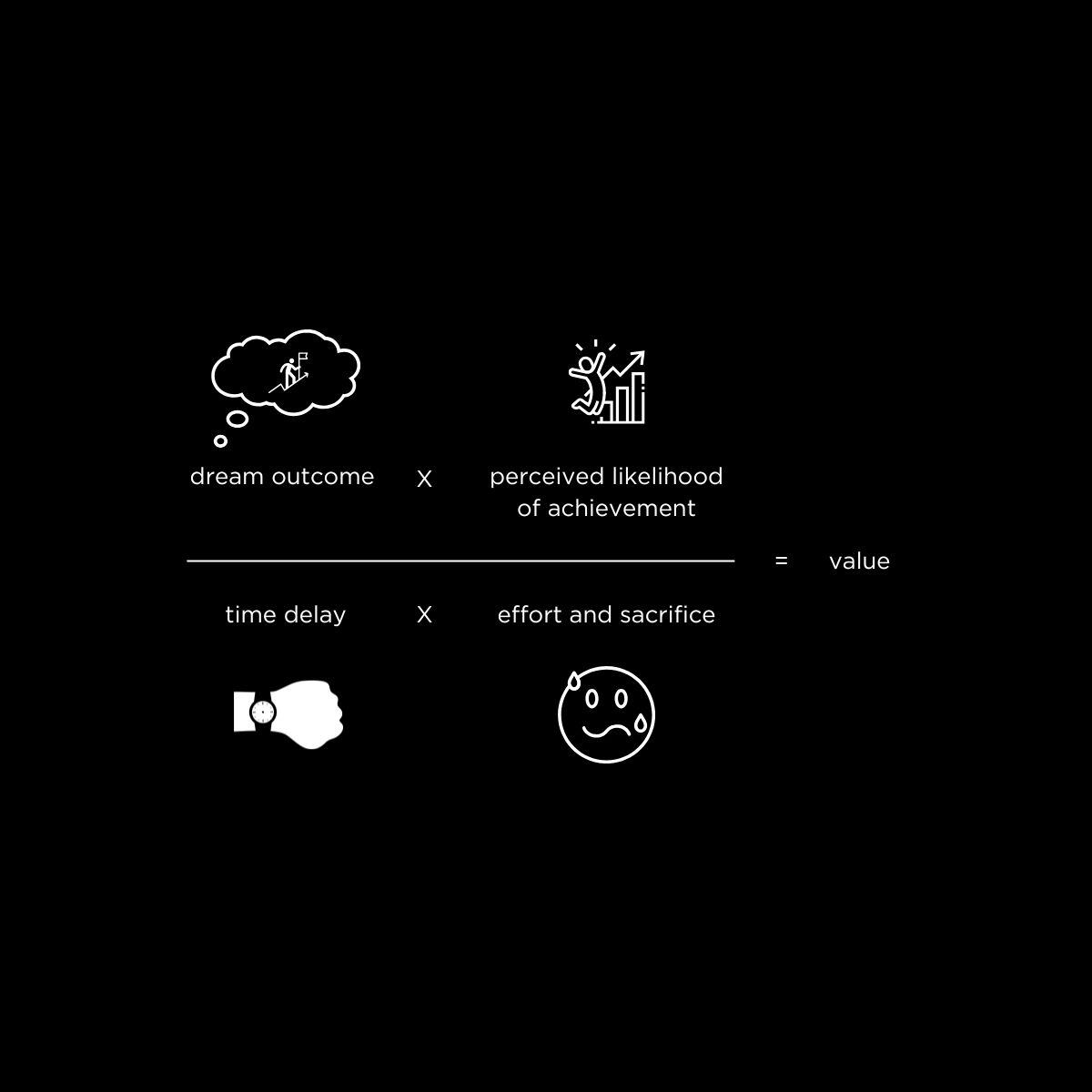The thing about business is that you need to sell stuff. Ideally, good stuff. That’s not rocket science. But the tricky part is making the stuff good—not just passable, not just fine, but actually, undeniably good.
As the year wraps up and the holidays approach, it’s a great time to reflect on what’s worked, what hasn’t, and how to create even more value in the year ahead. So let's talk about making stuff good.
Alex Hormozi has this framework that I think about a lot in the context of value propostions. It’s simple but effective. Value, he says, is about four things: Dream Outcome – What big result are you promising? Perceived Likelihood of Achievement – Why should customers believe you can deliver it? Speed – How quickly can you make it happen? Effort – How easy can you make it for them?
One Insight from Me
While I’m usually focused on helping my customers build strong value propositions, today I’m flipping the script to examine my own company, dawn. What promises am I making, and what’s the best way to deliver on them?
Dream Outcome of my clients – Crazy new innovation for their business. They want something groundbreaking, something that moves the needle in a big way.
Perceived likelihood of achievement – Ideally, I have done this successfully a million times before. Proven results make it easier for clients to trust the process.
Speed – Customers want that new thing built yesterday. Innovation should feel fast and impactful.
Effort – With zero effort on their side. They want results without having to get lost in the details.
If I could promise and deliver on like this, dawn would be crazy big by now. But realistically, that's not how it works. Innovation is hard—especially the kind that changes markets or creates entirely new ones. What i call horizon 3 innovation is messy, iterative, and full of unknowns. It’s not a clean roadmap; it’s a jungle. And I better not promise what I can't deliver.
So what can I actually promise and deliver?
There are two types of companies and big promises in the innovation space. The first type focus on consulting—selling frameworks and strategies that promise results through structure—and companies that focus on implementation—promising to turn ideas into reality. I’ve done both and I also think both are needed. And here’s what I've learned about delivering value in the context of innovation.
1 | Dream Outcome
Innovation doesn’t follow a straight line. It’s not a step-by-step process that runs like clockwork. It’s more like tuning an engine while it’s running. It requires strategy and implementation—actually building and testing things in a structured manner—is where value gets created. So sadly, I can't promise new land by you just following a plan. I can promise we will figure it out together, as I have with all projects in the past.
2 | Likelihood of Achievement
And this brings me to my next point. Trust isn’t built by hype; it’s built by progress. I believe transparency about what’s working and what isn’t builds confidence and keeps projects moving forward and clients coming back. I've been working in innovation teams and roles for over 7 years now. From innovation strategy, process, testing, and scaling, I've seen the steps and given the right setting can replicate these steps for any business.
3 | Speed
Results come faster when ideas are tested early and there is a plan. That’s why I equally emphasize strategy and rapid prototyping and validation—to make sure promising ideas don’t die in endless PowerPoint loops but there is also a clear path in which ideas get executed upon. I build the strategy while executing it. And that is the ultimate promise I can make on speed.
4 | Effort
While clients might dream of zero effort, the best results happen when they’re involved. In general, there are three ways to deliver value and execute on a promised dream:
-
Do it for the client – This provides immediate results and minimizes their effort, but it may not be lasting or scalable without ongoing support.
-
Do it with the client – A collaborative approach that builds long-term capability, fosters buy-in, and encourages learning. Think of it as teaching a man how to fish.
-
Enable the client to do it themselves – This would be the most scalable method for dawn, allowing clients to use systems and tools to sustain progress independently.
Each method requires different levels of effort and engagement from the client. The right approach depends on the situation—whether the focus is speed, scalability, or sustainability.
The truth is, I can’t promise zero effort or overnight success. But I can promise that my venture building expertise and your business knowledge combined will get there faster. And as I look to 2025, I’m excited to build even more. I’m growing my team to take on bigger challenges, create even greater impact, and scale our ability to deliver results. It’s going to be an exciting year, and I can’t wait to see what we create together.
One Question for You
Look at your own business through Hormozi's framework - is there anything you can change about any of the factors to deliver more value?
One Opportunity for Us
If you'd like to discuss building better value propositions, join us for the first dawn.friends lunch of the year, on January 10th.
To receive a calendar invite via e-mail, please join the guest list here.
We can talk about your dream outcomes and how to actually achieve them, rather than just dreaming about them. Though dreaming is also fine! Dreams are the first step in the value creation framework, after all.



